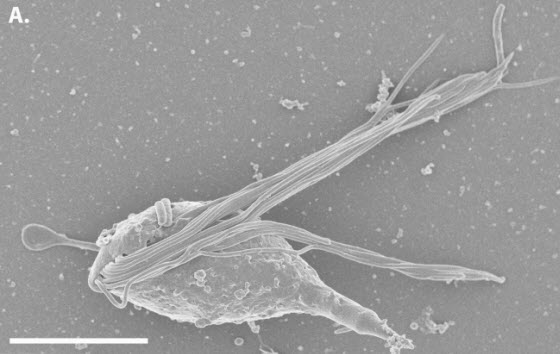It looks like you're using an Ad Blocker.
Please white-list or disable AboveTopSecret.com in your ad-blocking tool.
Thank you.
Some features of ATS will be disabled while you continue to use an ad-blocker.
1
share:
As a H.P. Lovecraft and Cthulhu fan, I love this new discovery.
Now we have a real creature with the name of Cthulhu...although not near the size of what was invisioned by Lovecraft, unless it comes into contact with gamma rays, or Fukushima radiation.
...I know, I know....I've seen too many horror movies.

www.sciencespacerobots.com...
Now we have a real creature with the name of Cthulhu...although not near the size of what was invisioned by Lovecraft, unless it comes into contact with gamma rays, or Fukushima radiation.
...I know, I know....I've seen too many horror movies.

www.sciencespacerobots.com...
Newly discovered tiny octopus-like microorganisms have been named after the fictional monsters created by American horror author H.P. Lovecraft. The single-cell protists, Cthulhu macrofasciculumque and Cthylla microfasciculumque, live in the gut of termites and help them digest wood. The scientists say in a release that they decided to name the creatures after the Lovecraft monsters as "as an ode to the sometimes strange and fascinating world of the microbe."
UBC researcher Erick James, lead author of the paper describing the new protists, says, "When we first saw them under the microscope they had this unique motion, it looked almost like an octopus swimming."
The octopus-like movements and appearance of both protists reminded James of the horrid Cthulhu and Cthylla. Lovecraft described the Cthulhu as "A monster of vaguely anthropoid outline, but with an octopus-like head whose face was a mass of feelers, a scaly, rubbery-looking body, prodigious claws on hind and fore feet, and long, narrow wings behind, along with a large jugular vein."
Cthulhu and Cthylla are very small. They are in the range of 10 to 20 microns, which is why they had not previously been identified. Most of the larger protists living in termites - that have already been identified - are around 50 to 150 microns.
edit on 5-4-2013 by isyeye because: (no reason given)
Existing thread here:
www.abovetopsecret.com...
Please add further comments to the ongoing discussion.
Thank You
-thread closed-
www.abovetopsecret.com...
Please add further comments to the ongoing discussion.
Thank You
-thread closed-
new topics
-
Why isn't Psychiatry involved?
Social Issues and Civil Unrest: 5 hours ago -
Help in song interpretation
Music: 7 hours ago -
FEMA Head Admits Agency Skipped 20 Homes with Trump Signs
Mainstream News: 9 hours ago -
Yet another Hack...
Rant: 10 hours ago
1
